As far as the finest mid-size crossovers go, the Explorer is right there among the leaders. This is one of the most fan-favored vehicles on the US market. If you want luxury, you’ll get that with Platinum. ST is all about performance, while the Hybrid edition boasts impressive fuel efficiency. But what if you’re driving the entry-level trim and want to change something in the exterior?
Maybe you’re tired of the mediocre stock lights? They aren’t particularly bright or far-reaching, that’s for sure. Well, that won’t be a problem if you switch to the Best LED Headlights for Ford Explorer! They’ll make the SUV look like a million bucks. Plus, you’ll get an extended illumination range, low power consumption, and more. In addition, upgrading to LED headlights can significantly enhance your nighttime driving safety by improving visibility for both you and other drivers on the road. Sounds exciting? Then check out my top-five picks for today!
Best LED Headlights for Ford Explorer Review
1. SEALIGHT – Best LED Headlights for Ford Explorer
In contrast to headlights that might take some effort to install, bulbs are much easier to handle. And if you buy the SeaLight pack, you’ll be amazed by how fast and straightforward the installation process is. It will take you less than five minutes to mount them properly and enjoy the new quality lighting. Speaking of that, these bulbs feature an anti-flare and beam tangent technology.
This means you won’t accidentally blind oncoming drivers, which is great news for safety. On top of that, the SeaLight bulbs have a universal, highly versatile design. As a result, they are compatible with 99% of the trucks and SUVs you see on the road. Keep in mind, though, that while these lights are significantly brighter than HIDs and Halogens, they’re slightly behind the competition in this regard.
Enhanced compatibility, quick, hassle-free installation, and market-leading safety features turn the SeaLight set into a must-have. However, if you’re looking for the brightest bulbs for the Explorer, these will probably not be up your alley. Other than that, this product is a bargain for most drivers.
2. Marsauto – Best LED Headlights for 2015 Ford Explorer
Did you know that LED headlight bulbs tend to get really hot? That’s right, but with Marsauto’s advanced and highly efficient heat dissipation system, that won’t be a problem. It easily handles temperature extremes and ensures a long service life for the set. Another big pro is the engineering quality. The bulbs boast a mighty combination of 6063 (high-grade) aluminum and copper board, which, again, boosts the cooling efficiency.
As for the light beam, it’s wider than the industry average and covers a lot more “ground” than the factory Explorer pack. And, it’s a natural, 6000K white light that most crossover drivers like. The only downside – when switching to the DRL mode, you might experience some flickering issues. This goes away quickly, though, and might not even be noticeable or cause any inconvenience.
With the Marsauto aftermarket LED bulbs, you’ll get impressive build quality, a wide illumination range, and a natural, satisfying white light. The heat dissipation technology is also quite impressive. DRL flickering is the only significant con, but it won’t bother you for long.
3. BEAMTECH – Best LED Headlights Bulbs for 2014 Ford Explorer
Are you looking for a US-made set of replacement bulbs for the Explorer? Well, if the answer is yes, Beamtech might interest you. Designed, built, and tested in the States, these bulbs cast a 6500K light and feature 360-degree light emission for a more uniform light effect. I also want to mention the customer support team. They are very quick to respond and help out with any questions regarding the lights.
The installation process might not be very smooth, though. Don’t worry: you won’t have to buy any expensive wires, cables, adapters, or anything like that. I only recommend ordering a set of O-rings (available for $2-3). These will help ensure a tight, snug fit. Otherwise, the bulbs won’t be secured properly in the Explorer headlight assembly, which isn’t something that you want.
Beamtech did an excellent job with these headlight bulbs. Designed in America, they feature client-oriented, fast, and helpful customer support. Advanced 360-degree light emission will also be a part of the deal. Just don’t forget to buy a couple of O-rings to avoid issues with the installation.
4. HIKARI – Best LED Headlights for Ford Explorer 2013
Most headlight bulbs last for 20-25K hours, and that’s a pretty great result. But with HIKARI, you’ll get up to 50K hours of service life, which automatically makes them a reasonable investment. They’re not particularly cheap, of course. Compared to the other sets on the list, they’re significantly pricier. But, that’s compensated not only by the max lifespan but also the above-average brightness.
These bulbs can illuminate a very dark and foggy road in the middle of the night. On top of that, they are covered by a limited lifetime warranty by HIKARI. So, do all these pros “beat” the one con – the steep price? Yes, they do, but only if you’ve got the budget for that. In that case, this will be a great purchase. And if not, you might want to look for aftermarket bulbs elsewhere.
HIKARI is brighter than the competition and has a significantly higher lifespan. And, it is protected by the company’s limited lifetime warranty. On the downside, these bulbs are pretty expensive (but worth it if you’re looking for premium-quality lights for the Explorer).
5. Aukee – Best LED Headlights for Explorer
In contrast to all the other headlight bulbs on the list, Aukee features a top-notch cooling fan. Don’t worry: it’s virtually silent but does a superb job of protecting the lights from overheating, thanks to the high-speed design. Along with that, Aukee boasts a brick-strong, 100% leak-free slash water-resistant construction. So, you can stop worrying about heavy rain, snow, or slush on your next off-roading trip.
Last, but not least, these bulbs are highly adjustable. The flexible design allows you to quickly and easily rotate the bulbs to find the right beam pattern. Now, this isn’t a US-made product. Instead, it is designed and manufactured in China. For some drivers, that can be a con, but Chinese production is why this product is reasonably-priced despite the premium quality. So, it might actually be a pro.
Adjustable beam patterns, a silent, incredibly efficient fan, and a sealed, waterproof design turn the Aukee headlight replacement bulbs into a bargain. Manufactured in China, they are highly durable and reliable and come at a reasonable price. If that’s exactly what you’re looking for, this could be the right investment.
Buyer’s Guide
We’ve already learned from the pros, cons, and detailed reviews that there are lots of factors that set different headlight LED bulbs from each other. Some have an impressive lifespan, while others shine the brightest light among the rivals. And then you gotta think about compatibility, installation, and, of course, resistance to natural hazards. Let’s talk about it all in-depth to become better at picking the right bulbs for our cars.
#1: Perfect Fitment = Quick Installation
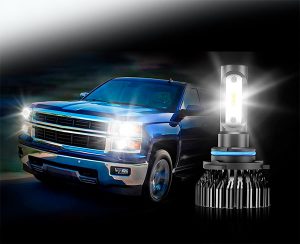
And one more thing to keep in mind: in the automobile industry, bulb/headlight designs and sizes change with every new generation. Therefore, if you’re, say, driving a 2017, 2018, or 2021 Explorer, a single set of bulbs will be a perfect fit for all three models. The same rule applies to other trucks, SUVs, and sedans as well.
#2: Protection Against Elements
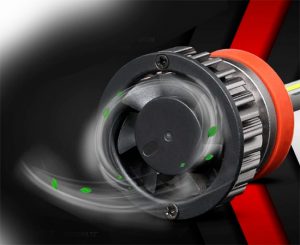
The heat dissipation system comes next. Make sure it’s strong and efficient enough to keep the bulbs nice and cool. Resistance against UV rays is also vital. Over time, the sun can do quite a lot of damage to LED bulbs, especially if you don’t always park the vehicle in the garage. Last, but not least, go for a scratch-proof design. Again, this mostly applies to the headlight assembly, not the individual bulbs, but would still be a useful “bonus”.
#3: Brightness: What to look for?
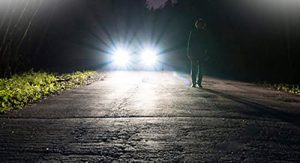
This only applies to the high beams, though, or the H13/9005 size. For low beams, 4-5K is just the right brightness. Sometimes, it’s easy to get these two confused. And remember: brightness is measured in Lumens (LM for short). So, don’t be surprised when you see something like 6000K LM in the specifications.
#4: Extended Life Cycle
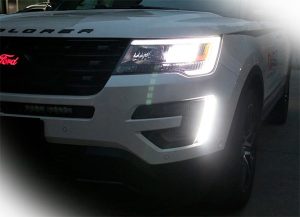
Now, you’ll never get anything nearly as impressive with Halogen or HID lights. For them, 2-3K hours is a decent service life. And, Light-Emitting Diodes don’t require much maintenance to run for that long. To learn more about the pros and cons of LEDs and Halogens, check the FAQ section right after this guide!
How to Splice Wires for Spyder LED Headlights on Ford Explorer?
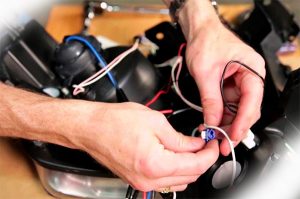
Essentially, a splice is when you connect two separate electric wires to each other, and the formed joint is what they call a splice. The most important thing here is to make sure the connection is well-made. Otherwise, the wires will suffer a loss of voltage, which is not what you want with LED headlight bulbs. For this, you’ll need a wire stripper: it’s used to, well, strip some of that wire on both ends.
Next, put the wires next to each other – the exposed ends need to touch. Grab a soldering tool to form a strong connection. Be careful not to hold the tool over the wires for too long – you might melt them! Or, you can go with splice connectors instead. Finally, use a small piece of heat shrink to cover the exposed wire ends. Apply heat (the soldering tool will work here as well) to make it “stick”.
What to Look for in LED Headlights?
So, we just went over the key factors that define LED bulbs. But, there are still some things to keep in mind before spending your hard-earned bucks on new lights. I’m talking about warranties, certifications, the cooling mechanism, and more. Here, take a look at what I’m talking about:
Instants Lighting. The best aftermarket bulbs take less than a second to go from no light to full intensity. And this can be very important when you’re camping out or off-roading during the night in uncharted lands. Fast beam pattern switching should also be a part of the picture. Say, the Sealight bulbs from the list can switch it in 0.1 seconds!
The Cooling System. I know we already talked about the importance of a heat dissipation system. But what’s the best option for this? Right now, fanless designs are very popular. They’re quite efficient and almost noise-free. However, I would still recommend investing in systems that do include a fan. These can be pretty silent and (usually) do a better job of keeping the bulbs cool.
Warranties and Certifications. No matter what gear, equipment, or accessory you buy for the Explorer, it would be best if it was covered by some sort of a warranty. For bulbs, a limited lifetime warranty is the most common deal. Or, it can be a one- or two-year guarantee. Replacement guarantees or refunds/MPGs are a lot less common. But, since headlight LED bulbs don’t cost much, a lack of protection isn’t usually a big con.
With that said, pay extra attention to the specs and make sure you’re ordering the right set. And, if there’s a warranty included, that’s a pro. Another thing to check for is certifications. I’m talking about DOT, SAE, and ISO improvements. That means the light bulbs have gone through a series of tough third-party tests and have proven their worth. Plus, the certifications are a guarantee that you’re not violating any local laws.
Which Is Best for my Ford – LED or Halogen Headlights?
This is a very popular question among Explorer drivers and I get asked it every day. So, let’s set the record straight right now. Halogens have been around for many decades – it’s an older technology that used to rule the market. However, with the rise of LEDs, the situation has dramatically changed. The most significant advantage of Halogens over LEDs (and HIDs as well, by the way) is the cheap price.
You can get a whole set of Halogen headlight bulbs for 20-30 US dollars, or even less. As for the downsides, Halogens have a very modest lifespan. Furthermore, they are quite “power-hungry” and tend to overheat when not treated properly. Moving on to LEDs – Light-Emitting Diodes – they’re superior in pretty much every sense. True, they’re not as low-priced, but still affordable for the average Explorer owner.
One minor con: when some of the diodes start to malfunction, replacing/fixing them might prove to be a challenge. Now, what makes these bulbs stand out is the lifespan: 50000 hours is 25 times (!) longer than what you’ll get with Halogens. Power consumption, in turn, is much lower and you won’t need any expensive wires to protect LEDs from temperature spikes.
Resistance to elements is, again, also much better compared to Halogens. Add above-average brightness and a wide illumination range and you’ll see why these headlights are so popular among regular drivers and manufacturers. Last, but not least, LED headlights look really cool on a trendy crossover like the Explorer.
Oh, and the best thing about modern-day vehicles – even if the Explorer doesn’t feature LED lights, you can still remove the factory set and replace it with LEDs. This can be done manually, without any mechanical help or expensive accessories. That’s especially true if you’re driving a relatively new SUV with all the right hardware and wires.
Conclusion
LED headlights are slowly, but surely taking over the market, and there’s very little not to like about them. While LEDs aren’t super cheap, in the long run, they do make the investment worth your while. Besides, Light-Emitting Diodes are the brightest, farther-reaching, and most durable/long-lasting option for any modern-day SUV. And if you’re the proud owner of the Explorer, a new set of LED headlights will be an excellent upgrade.
I’m more than confident that you’ll find your perfect set on today’s list. Every single product went through tough tests to prove its worth. Plus, don’t forget to check out the Buyer’s Guide and the FAQ. There, you’ll learn how to make the right choice, what to look for in LEDs, and more. Armed with the knowledge from the list, the Buyer’s Guide, and the FAQ, you’ll be able to make an informed decision and select the best LED headlights to suit your needs and preferences. Enjoy your new lights, and I’ll see you out there!

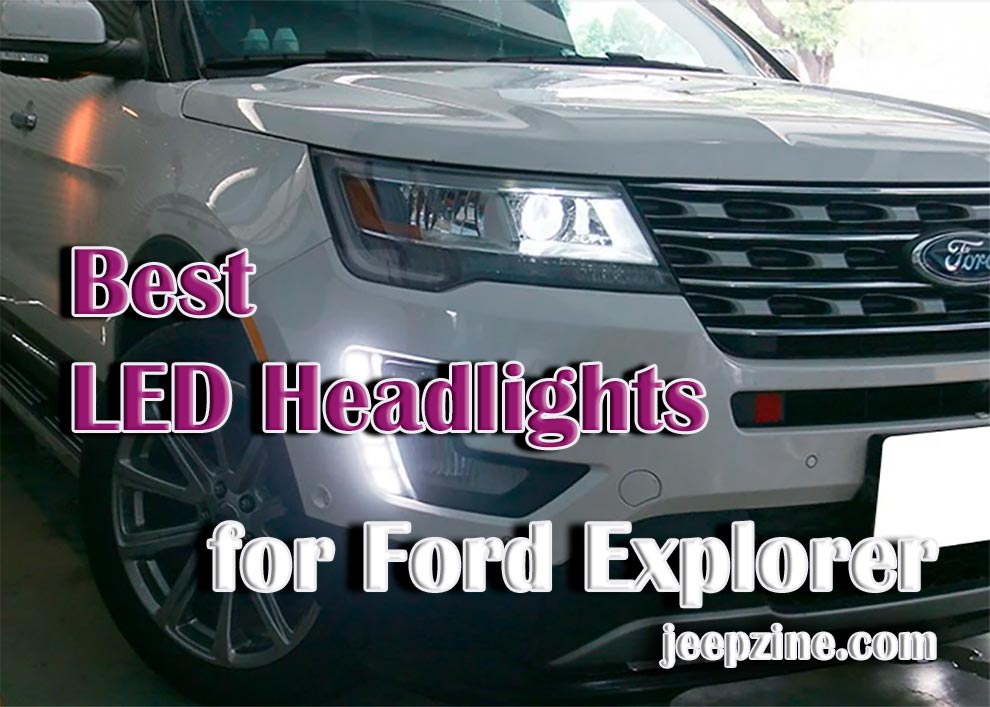





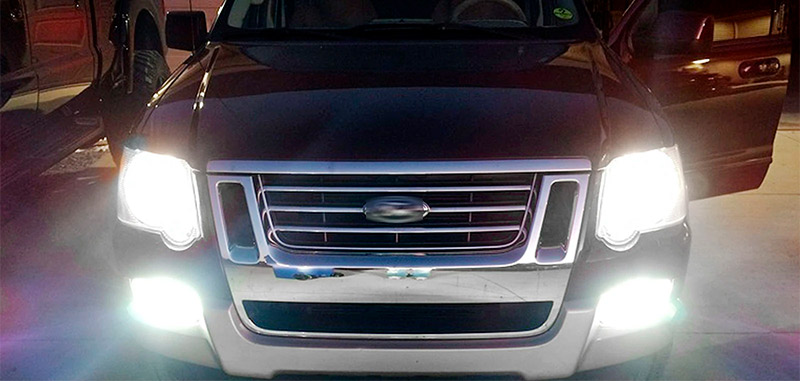
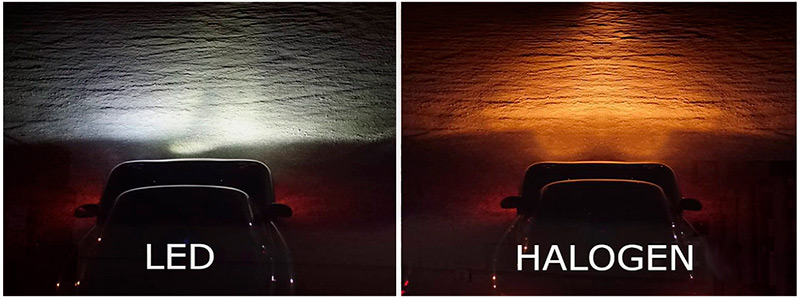
Add Comment